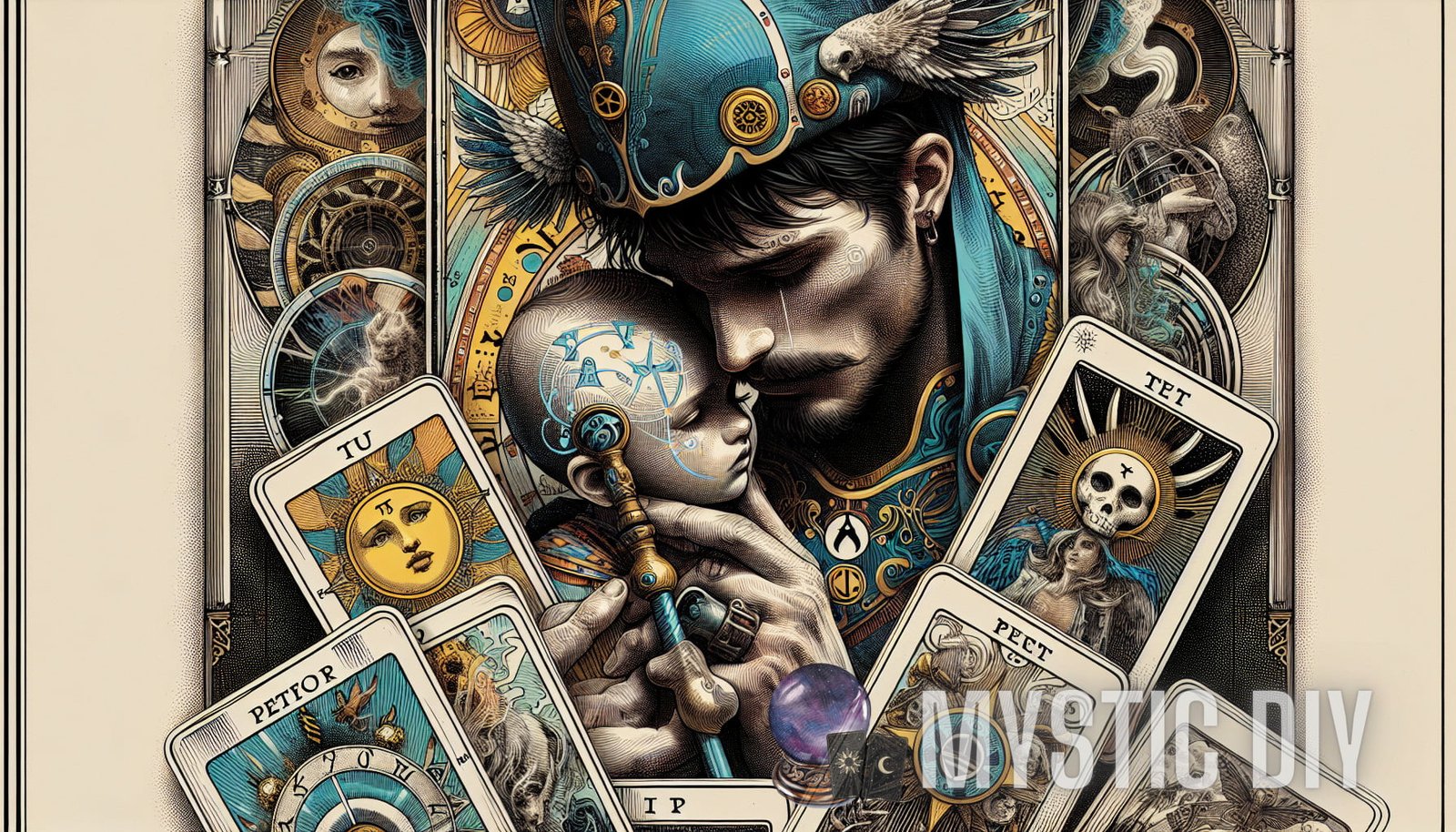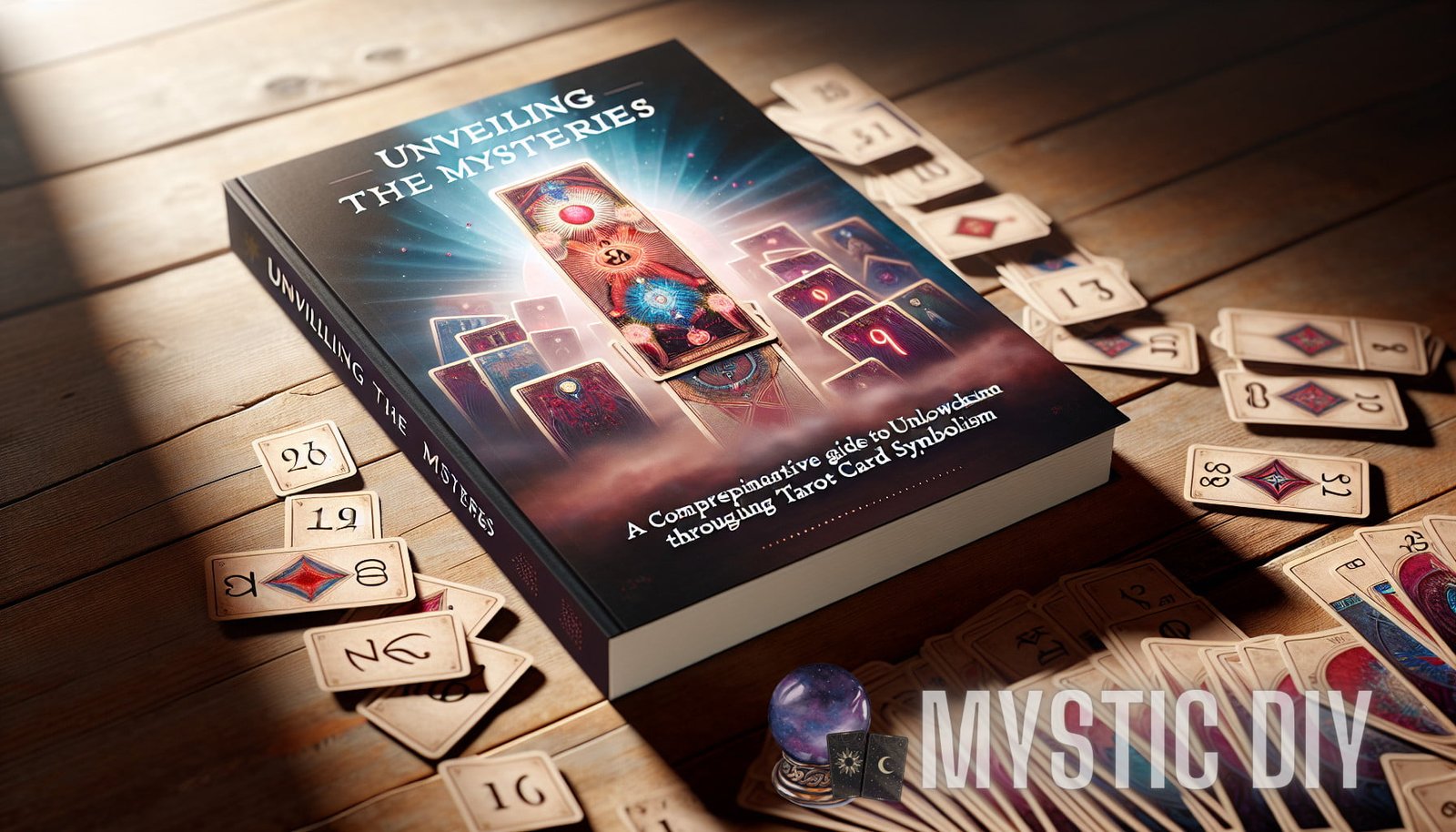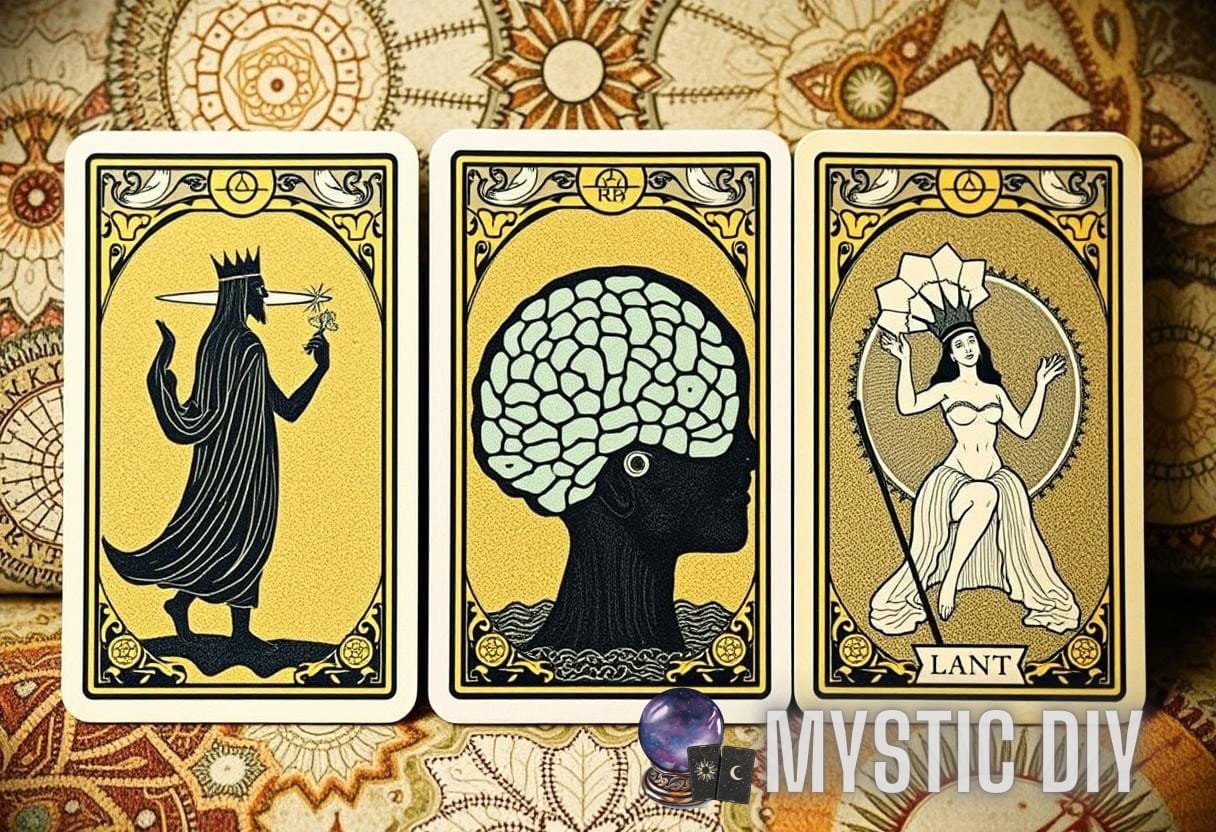Introduction
Tarot cards have long captivated the curiosity of both the spiritual and the skeptics. These intricately designed cards, with their enchanting symbolism, offer a window into the depths of our unconscious minds. To truly appreciate and unlock the power of tarot, it is important to delve into the rich tapestry of symbolism that is woven into each card. By unraveling the enigmatic symbolism of tarot cards, we can embark on a journey of personal growth and self-discovery.
An article available at https://mysticdiy.website/tarot/tarot-transformation/ and https://mysticdiy.website/tarot/unlocking-tarot-basics-demystifying-the-major-and-minor-arcana-for-beginners/ will further your understanding of tarot symbolism.
The History of Tarot
The history of tarot can be traced back to the 15th century when it is believed to have originated in Europe. Originally, tarot cards were used for playing games, much like a deck of playing cards. It was not until the 18th century that tarot cards started to be associated with divination and spirituality.
It is commonly believed that tarot cards were first introduced to the public in the form of a deck called the “Tarot de Marseille”. This deck, still widely used today, consists of 78 cards divided into the Major Arcana and the Minor Arcana.
The Major Arcana, often referred to as the “trump” cards, consists of 22 cards that represent major life events and archetypal energies. The Minor Arcana, on the other hand, consists of 56 cards divided into four suits: Wands, Cups, Swords, and Pentacles.
As tarot gained popularity, it became associated with mysticism and esoteric knowledge. The symbolism of the cards became an integral part of the tarot reading process, allowing readers to tap into the collective unconscious and provide guidance and insights to those seeking answers.
Tarot Symbolism: The Language of the Cards
Tarot cards are adorned with intricate symbols that hold deep meaning and significance. Each card is like a piece of art, with every element carefully chosen to convey a specific message.
Unlocking Tarot Basics: Demystifying the Major and Minor Arcana for Beginners
Internal link: Visit https://mysticdiy.website/tarot/unlocking-tarot-basics-demystifying-the-major-and-minor-arcana-for-beginners/ for a comprehensive guide to the Major and Minor Arcana.

The Major Arcana
The Major Arcana cards are often considered the backbone of the tarot deck. These cards represent major life events, archetypal energies, and spiritual lessons. Each card in the Major Arcana carries its own unique symbolism, contributing to the overall meaning of the card.
For example, The Fool card represents new beginnings, taking risks, and stepping into the unknown. The imagery on the card depicts a carefree individual embarking on a journey with a small dog, symbolizing companionship and trust.
The High Priestess card, on the other hand, represents intuition, hidden knowledge, and the mysteries of the subconscious mind. The card often depicts a serene woman seated between two pillars, with a veil covering her, symbolizing the hidden realms of the unconscious.
By studying and understanding the symbolism of each Major Arcana card, we can gain deeper insights into the universal energies at play in our lives. They can provide guidance for decision-making and shed light on our spiritual path.
The Minor Arcana
The Minor Arcana cards, comprised of the four suits – Wands, Cups, Swords, and Pentacles – represent the day-to-day aspects of life. Each suit corresponds to a different element and has its own set of symbolic meanings.
The Wands suit is associated with the element of fire and represents inspiration, passion, and creativity. The Cups suit, associated with the element of water, represents emotions, relationships, and intuition. The Swords suit, associated with the element of air, represents intellect, challenges, and communication. The Pentacles suit, associated with the element of earth, represents work, finances, and material possessions.
Every card in the Minor Arcana also bears its own symbolic imagery that contributes to the overall meaning of the card. For example, the Four of Wands represents celebration, harmony, and community. The card often depicts people celebrating and dancing under a garland of wands, symbolizing unity and joy.
Understanding the symbolism of the Minor Arcana cards allows us to gain insights into the practical aspects of our lives, such as relationships, work, and finances. By examining the imagery and meanings of these cards, we can gain clarity and make informed decisions.
Interpreting Tarot Symbolism: A Journey of Self-Discovery
Interpreting tarot symbolism is an art form that requires deep intuition, knowledge of the cards, and an understanding of the individual’s personal circumstances. The meaning of each card can vary depending on its position in a tarot spread and the question being asked.

When interpreting tarot symbolism, it is essential to pay attention to various elements, including:
- Colors: Colors can evoke specific emotions and energies. For example, red may symbolize passion and energy, while blue may represent calmness and tranquility.
- Numbers: Each number in tarot holds its own significance. For example, the number 1 represents new beginnings and potential, while the number 7 represents introspection and reflection.
- Animals: Animals depicted on tarot cards often have symbolic meanings. For instance, a lion may represent strength and courage, while a butterfly may symbolize transformation and growth.
- Landscapes: The landscapes portrayed in tarot cards can provide clues to the overall meaning of the card. For example, a mountainous landscape may suggest overcoming challenges, while a peaceful meadow may symbolize tranquility and peace.
The Benefits of Tarot Symbolism for Personal Growth
Tarot symbolism holds immense potential for personal growth and self-discovery. By working with the symbolism of tarot cards, we can unlock hidden aspects of ourselves and gain clarity in various areas of our lives.
Here are some of the benefits of exploring tarot symbolism:
- Self-reflection: The symbolism of tarot cards can serve as a mirror, reflecting our inner thoughts, feelings, and desires. Through self-reflection, we can gain a deeper understanding of ourselves and our motivations.
- Self-awareness: Tarot symbolism can bring awareness to our unconscious patterns and beliefs. By recognizing these patterns, we can make conscious choices and break free from limiting beliefs.
- Guidance and clarity: Tarot symbolism can provide guidance and clarity in times of confusion or indecision. It can offer insights into different perspectives and help us make informed choices.
- Connection to the collective unconscious: The symbolism of tarot cards taps into the collective unconscious, allowing us to access universal wisdom and archetypal energies. This connection can deepen our spiritual journey and provide a sense of connection to something greater than ourselves.
Conclusion
Tarot symbolism is a powerful tool for personal growth and self-discovery. By unraveling the enigmatic tapestry of symbolism in tarot cards, we can gain deep insights into our own psyche and navigate the complexities of life with clarity and guidance.
Whether you are a novice or an experienced practitioner, exploring tarot symbolism opens up a world of possibilities for growth and transformation. Embrace the journey and let the cards guide you on a path of self-discovery.
External link: Learn more about the history of tarot on Wikipedia.


